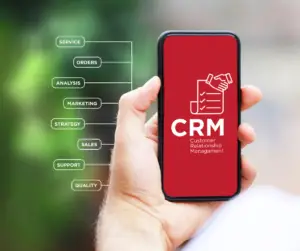In companies around the world, the COVID-19 pandemic kick-started a revolution and acted as a significant catalyst for transformation powered by cloud-based technologies.
James Le Bailly, director of audit at KPMG Crown Dependencies, cites his own company’s experiences in coping with the pandemic—and the lasting changes to which these efforts have led.
“The most urgent considerations were information and communication; making sure that our staff had the resources available to them in order to cope with the situation and that our clients were also appropriately informed of our response,” Bailly writes of the early days of the pandemic.
“We had to manage the transition to 100 percent remote working and issues caused by not having physical access to clients and their data. From a business continuity perspective, assuming we could ensure our teams’ welfare and we could safely send and receive data, then (on the assumption our clients could do the same) key initial hurdles could be cleared.”
“We also needed to consider the financial impact on our clients following the unprecedented shock to their business models and the very real existential threat some of them faced – not forgetting the accounting and audit considerations that resulted.”
While some of these hurdles were jumped, others such as typical organizational and cultural barriers were simply pushed aside, he says.
“Just because we previously tended, or in some cases were made, to do something in a certain way no longer seemed to matter. Projects and decision making were implemented in days and weeks as opposed to months or years,” he adds.
Having worked with technology companies in San Francisco and Silicon Valley for a number of years, Bailly says he has worked with people who understand how to get the best out of technology.
The success stories he’s seen all appear to share characteristics that don’t change regardless of whether there is a global pandemic or where a company is located, or what its product or service is, or how big the organization is.
The first of those characteristics is awareness and the need to understand what the need is. Is it operational such as a need to fulfill an existing requirement, or is it opportunistic—the chance to improve and do something more efficiently or do something related or completely new to gain a strategic advantage? “Separate fact from opinion and understand the information,” Bailly says. “The best decisions are made using the best information. Be aware of your awareness.”
The second key characteristic is mindset. The KPMG 2020 CEO Outlook showed that pre-COVID concerns expressed by CEOs about migrating their business to the cloud were significantly erased as a result of the pandemic, forcing everybody to embrace digital technologies. “An open mind and a considered cost/benefit analysis with consideration of options along with that good old-fashioned gut feeling is required,” Bailly says. “If you are not technologically savvy, then you owe it to your business to let someone who is provide their insights and suggestions. You can always say no.”
Finally, application of technology is fundamental to success.
“If you are going to invest time and money into technology, then commit to ensuring that you have the right technology and that you know how to use it,” he says. “No good having a sledgehammer to crack a nut or having a nut when you need a bolt. “
Now is the time to reassess those short-term strategic decisions and “new ways” which enabled your business to navigate the pandemic, Bailly concludes.
“They may have worked over the past few months and they may still be the answer now; but we must continually assess their appropriateness in terms of longer-term strategy. The last year has taught us that reviewing current technology and considering emerging technologies must be a regular and recurring agenda item” whether the meeting is done remotely or in the boardroom.
Source:https://home.kpmg/dp/en/home/media/press-releases/2021/06/covid-and-the-cloud.html





